Did you know that homemade stir fry sauce is not only easy to make but also significantly tastier and healthier than store-bought versions? By creating your own sauce, you can take control of the flavors and tailor it to suit your preferences. Plus, it’s a budget-friendly option that saves you money in the long run. Get ready to elevate your stir-fry game with this irresistible recipe and expert tips!
- Homemade stir fry sauce offers superior taste and customization compared to store-bought alternatives.
- Making your own sauce allows you to control the ingredients and adapt it to different dietary preferences.
- Save money by preparing this easy stir fry sauce recipe from scratch instead of buying pre-packaged options.
- With a few key ingredients, you can whip up a delicious Asian-inspired sauce in no time.
- Discover tips for using the sauce, variations to suit different dietary needs, and serving suggestions to complete your meal.
Why Make Your Own Stir Fry Sauce?
If you’re a fan of stir fry dishes, you’ve probably tasted the delicious sauce that brings all the flavors together. While it’s convenient to grab a bottle of store-bought stir fry sauce, there’s a world of difference when you make your own homemade stir fry sauce.
Homemade stir fry sauce offers a variety of benefits that elevate your stir fry game to a whole new level.
“The taste and cost benefits of homemade sauce, along with the ability to customize it to suit your preferences, make it a game-changer in the kitchen.”
Taste Benefits: One of the biggest advantages of making your own stir fry sauce is the incredible taste. Homemade sauces are made with fresh ingredients and can be tailored to your specific preferences. You have full control over the flavors, allowing you to create a sauce that perfectly complements your stir fry ingredients.
Cost Benefits: Buying pre-packaged stir fry sauces can quickly add up on your grocery bill. By making your own sauce, you can save money in the long run. Most homemade stir fry sauce recipes use common pantry ingredients that are relatively inexpensive. Plus, you can make a larger batch and store it for future use, further maximizing your savings.
Customization: Another significant advantage of homemade stir fry sauce is the ability to customize it exactly to your liking. You can adjust the levels of sweetness, saltiness, spiciness, or tanginess according to your taste preferences. Additionally, you can experiment with different ingredients and flavors to create unique and personalized variations.
When it comes to stir fry dishes, a homemade sauce takes the flavor profile to a whole new level. The next section will dive deeper into the key ingredients that make up this delectable sauce.
Stay tuned for a tantalizing table showcasing the key ingredients soon!
The Key Ingredients
When it comes to making a delicious vegetable stir fry sauce, the key is in the ingredients. Each component contributes to the flavor and texture, adding depth and complexity to your dish.
Here are the essential components:
| Ingredient | Purpose | Possible Substitutions |
|---|---|---|
| Soy sauce | Provides savory umami flavor | Tamari sauce, coconut aminos |
| Chicken stock | Enhances richness and depth | Vegetable stock, mushroom stock |
| Cornstarch | Thickens the sauce for a glossy consistency | Arrowroot starch, tapioca starch |
| Honey | Adds a touch of sweetness to balance the flavors | Maple syrup, agave nectar |
| Sesame oil | Infuses nutty aroma and depth of flavor | Avocado oil, vegetable oil |
| Rice vinegar | Provides a tangy and slightly acidic note | Apple cider vinegar, white wine vinegar |
| Fresh ginger | Delivers bright, spicy warmth | Dried ginger powder |
| Fresh garlic | Brings pungent and aromatic flavors | Garlic powder, garlic paste |
These ingredients work harmoniously to create a balance of flavors in your stir fry sauce. However, if you have dietary restrictions or personal preferences, you can easily substitute some of the ingredients with alternatives mentioned in the table.
“The combination of soy sauce, chicken stock, honey, and fresh ginger creates a umami-packed sauce with a touch of sweetness and a hint of spiciness. It’s the perfect accompaniment to your favorite stir-fried vegetables and protein.”
How to Make the Sauce
Creating a flavorful and well-mixed vegetable stir fry sauce is easy with just a few simple steps. To prepare the sauce, follow these instructions:
-
Combine all the ingredients in a medium-sized bowl.
-
Whisk or shake the mixture vigorously until all the ingredients are well-combined and the sauce has a smooth consistency. This will ensure that the flavors are evenly distributed throughout the sauce.
For an extra touch of flavor, you can also use a blender or food processor to blend the sauce ingredients together. This will create a silky smooth texture and enhance the overall taste of the sauce.
Tip: Whisking the sauce in a bowl or shaking it in a jar with a tight-fitting lid will provide the best results, allowing for thorough mixing without any lumps or clumps.
Once the sauce is prepared, it’s ready to be added to your favorite vegetable stir fry or any other dish of your choice. Its versatile nature allows you to experiment and explore different flavor profiles in your cooking.
| Equipment Needed: | Ingredients: |
|---|---|
|
|
The table above provides a quick overview of the equipment needed and the ingredients required for making the vegetable stir fry sauce.
Tips for Using the Sauce
Once you’ve prepared your flavorful vegetable stir fry sauce, it’s time to put it to good use and elevate your stir-fried dishes. Here are some tips and recommendations to help you make the most of your homemade sauce:
- Add the sauce towards the end of the stir-frying process to prevent it from becoming too thick or overpowering the other ingredients.
- Start with a small amount of sauce and taste as you go. You can always add more if needed, but it’s difficult to fix an overly saucy dish.
- Consider marinating your protein of choice in the sauce for a few minutes before stir-frying. This will infuse the flavors and result in a more delicious and well-seasoned dish.
- For a glossy finish, toss in some sesame oil or sprinkle toasted sesame seeds over the stir-fried dish just before serving.
- Variety is the spice of life: Experiment with different vegetables, proteins, and grains to create diverse stir-fried dishes. The sauce acts as the binding agent that brings everything together.
Whether you’re preparing a quick weeknight meal or entertaining guests, these sauce usage tips will help you achieve the perfect balance of flavors in your stir-fry. Get creative and have fun exploring the versatility of your homemade vegetable stir fry sauce.
Pro Tip:
Keep in mind that the sauce contains cornstarch, which helps thicken it. If you’re planning to use the leftovers the next day, the cornstarch may cause the sauce to become thicker upon refrigeration. Simply add a splash of water or broth when reheating to restore the desired consistency.
Variation Ideas
Looking to add some extra flair to your vegetable stir fry sauce? Here are a few variation ideas to cater to different dietary preferences:
Vegan Stir Fry Sauce
For a vegan twist, try substituting the traditional ingredients with vegan-friendly options. Replace the honey with maple syrup or agave nectar, use tamari instead of soy sauce, and opt for vegetable broth in place of chicken stock. This vegan stir fry sauce will still deliver all the flavor without any animal products.
Gluten-Free Stir Fry Sauce
If you follow a gluten-free diet, it’s easy to adapt the stir fry sauce recipe. Simply swap out regular soy sauce for a gluten-free soy sauce alternative, which is readily available in most grocery stores. Additionally, ensure all the other ingredients you use, such as cornstarch and stock, are also certified gluten-free. With these simple adjustments, you can enjoy a gluten-free stir fry sauce without compromising on taste.
Spicy Stir Fry Sauce
If you crave a bit of heat in your stir fry, add some spicy elements to the sauce. You can include ingredients like chili flakes, fresh chili peppers, or Sriracha sauce to achieve your desired level of spiciness. Remember to adjust the amount of spice according to your preferences, and don’t be afraid to experiment with different combinations of hot ingredients to create your perfect spicy stir fry sauce.
By exploring these variation ideas, you can customize your vegetable stir fry sauce and cater to different dietary needs and flavor preferences. Whether you’re vegan, gluten-free, or looking for an extra kick, these variations will elevate your stir fry game.
Serving Suggestions
When it comes to serving the delicious vegetable stir fry sauce, there are plenty of options to explore. Whether you want to pair it with rice or noodles, this versatile sauce is sure to elevate your meal. Here are some serving suggestions to consider:
1. Pair with Rice
Rice is a classic choice to accompany stir-fried dishes, and the vegetable stir fry sauce is no exception. You can choose between white rice and brown rice, depending on your preference. The fluffy texture and subtle flavor of rice provide the perfect base for the bold flavors of the sauce. Just pour the sauce over a bed of steamed rice and enjoy a well-balanced and satisfying meal.
2. Serve with Noodles
If you’re craving a heartier option, pairing the sauce with noodles is a fantastic choice. Opt for rice noodles, udon noodles, or even soba noodles to create a delicious stir-fry noodle dish. The sauce will coat the noodles nicely, infusing them with its savory goodness. Add some stir-fried vegetables and protein of your choice for a complete and filling meal.
3. Other Serving Options
Aside from rice and noodles, there are other creative ways to serve the vegetable stir fry sauce. Here are a few ideas:
- Stir-Fry Bowl: Create a vibrant and nutritious bowl by layering the sauce with a variety of fresh vegetables, such as broccoli, bell peppers, carrots, and snap peas. Top it off with some protein, like tofu or chicken, and garnish with sesame seeds or chopped green onions.
- Dipping Sauce: Use the vegetable stir fry sauce as a flavorful dipping sauce for spring rolls, potstickers, or dumplings. Its rich umami taste will complement these appetizers perfectly.
- Marinade: Transform your protein into a delectable dish by marinating it in the vegetable stir fry sauce. Let the flavors permeate the meat or tofu overnight, then grill, bake, or stir-fry for a mouthwatering result.
Experiment with these serving options to discover your favorite way to enjoy the vegetable stir fry sauce. Whether you’re craving rice, noodles, or something more unique, this versatile sauce is guaranteed to enhance any meal.
| Serving Option | Description |
|---|---|
| Pair with Rice | Enjoy the sauce poured over a bed of fluffy white or brown rice for a well-balanced meal. |
| Serve with Noodles | Combine the sauce with rice noodles, udon noodles, or soba noodles for a delicious stir-fry noodle dish. |
| Stir-Fry Bowl | Create a vibrant and nutritious bowl by layering the sauce with a variety of fresh vegetables and protein. |
| Dipping Sauce | Use the sauce as a flavorful dipping sauce for spring rolls, potstickers, or dumplings. |
| Marinade | Marinate your protein in the sauce for enhanced flavor before grilling, baking, or stir-frying. |
Storing and Freezing
Once you’ve prepared a delicious batch of vegetable stir fry sauce, you may find yourself with leftovers. Fortunately, storing and freezing the sauce is a great way to ensure its long-lasting freshness for future meals. Here are some helpful tips for storing and freezing your stir fry sauce:
Storing Stir Fry Sauce
To store your stir fry sauce, transfer it to an airtight container or jar. Make sure the container is clean and dry before pouring in the sauce. Properly sealed, the sauce can be stored in the refrigerator for up to one week.
Tip: Use a glass container with a tight-fitting lid for optimal freshness and to prevent any unwanted odors from permeating the sauce.
Freezing Stir Fry Sauce
If you have a larger batch of stir fry sauce or want to keep it for an extended period, freezing is your best option. Follow these steps to freeze your sauce:
- Allow the sauce to cool completely before freezing. This helps maintain its flavor and texture.
- Divide the sauce into individual portions or use ice cube trays for smaller servings. This way, you can conveniently thaw only the amount you need for each meal.
- Place the divided sauce into freezer-safe containers or sealable freezer bags. Make sure to remove any excess air from the containers or bags before sealing them.
- Label each container or bag with the date and contents for easy identification.
- Store the sauce in the freezer for up to three months.
Tip: Freezing your stir fry sauce in smaller portions allows for easier thawing and reduces waste.
Meal Prep with Stir Fry Sauce
Stir fry sauce is a fantastic ingredient to include in your meal prep routine. It saves time and adds flavor to your dishes. Here are some ideas for incorporating stir fry sauce into your meal prep:
- Make a larger batch of stir fry sauce and use it as a marinade for proteins like chicken, beef, or tofu. Store the marinated protein in the refrigerator or freezer until you’re ready to cook.
- Pre-cut your favorite vegetables and store them in separate containers. When mealtime comes, simply stir fry the vegetables, add the thawed sauce, and voila! A quick and nutritious meal.
- Create stir fry sauce-based freezer meals by combining the sauce with cooked protein, vegetables, and rice or noodles. Portion the meals into freezer-safe containers and label them for easy retrieval.
By incorporating stir fry sauce into your meal prep routine, you can enjoy delicious and healthy stir-fried dishes whenever you desire.
Shelf Life and Reheating
When stored properly in the refrigerator, homemade stir fry sauce can last for up to one week. However, it’s essential to check for any signs of spoilage, such as a change in color or an off smell, before using it.
When reheating refrigerated or frozen stir fry sauce, transfer it to a saucepan and gently heat it over low to medium heat until warmed through. Stir occasionally to prevent any scorching. Alternatively, you can microwave it in short intervals, stirring in between, until heated to your desired temperature.
Remember to discard any unused sauce that has been left out at room temperature for more than two hours to ensure food safety.
Conclusion
In summary, making your own vegetable stir fry sauce brings numerous benefits. By opting for a homemade sauce, you have full control over the ingredients, ensuring a healthier and more flavorful option for your stir-fried dishes. The versatility of this recipe allows you to customize the sauce according to your dietary preferences and restrictions.
The benefits of homemade sauce are undeniable. Not only does it offer a superior taste compared to store-bought alternatives, but it also saves you money in the long run. By using pantry staples such as soy sauce, chicken stock, cornstarch, honey, sesame oil, rice vinegar, fresh ginger, and fresh garlic, you can create a sauce that suits your taste perfectly.
The flexibility of this recipe extends beyond flavor. Whether you follow a vegan or gluten-free diet or prefer a spicy kick in your stir-fried dishes, you can easily adapt the vegetable stir fry sauce to meet your needs. With simple ingredient substitutions, you can enjoy delicious, customized stir-fries without sacrificing taste or dietary requirements.
In conclusion, the homemade vegetable stir fry sauce is a game-changer in the kitchen. Its simplicity, cost-effectiveness, and adaptability make it a must-have recipe for anyone looking to elevate their stir-fried dishes. With this sauce, you can effortlessly create tasty and healthy meals that satisfy your craving for Asian-inspired flavors. So, why settle for less when you can enjoy the incomparable benefits of homemade sauce?

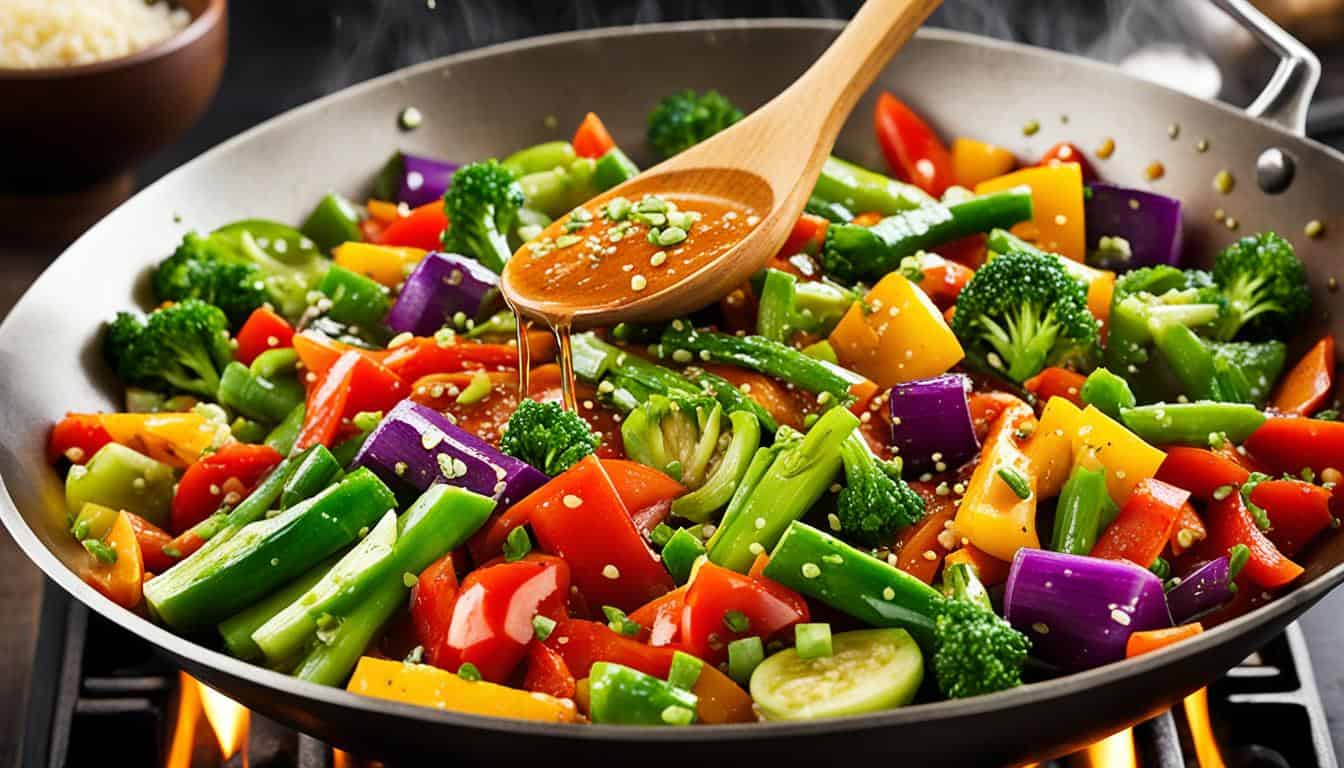
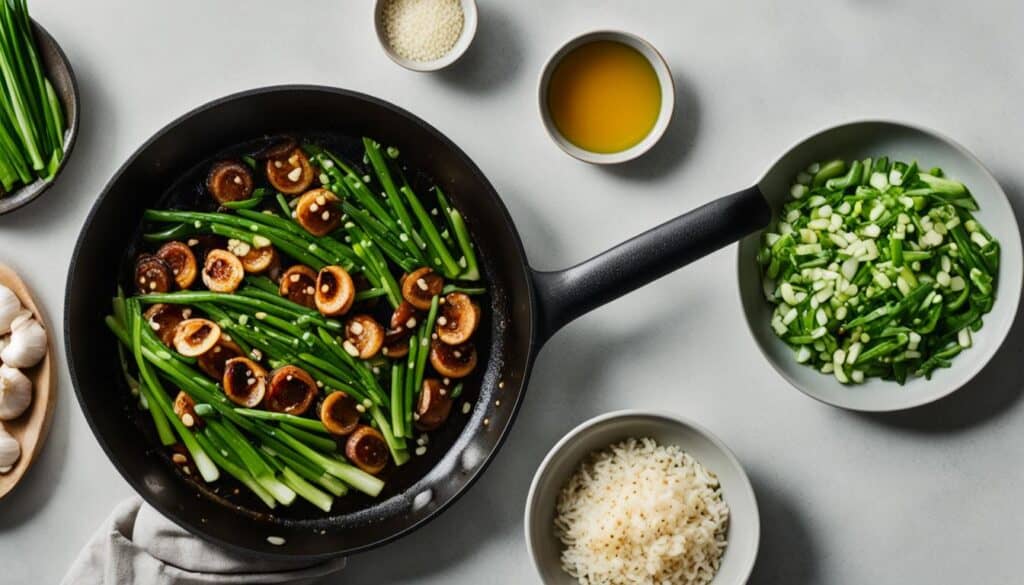
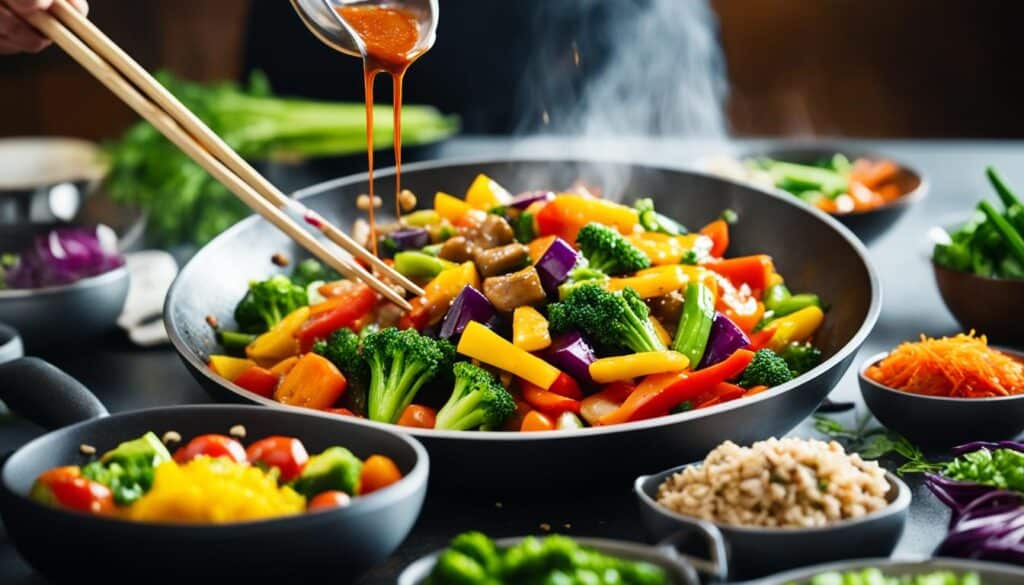
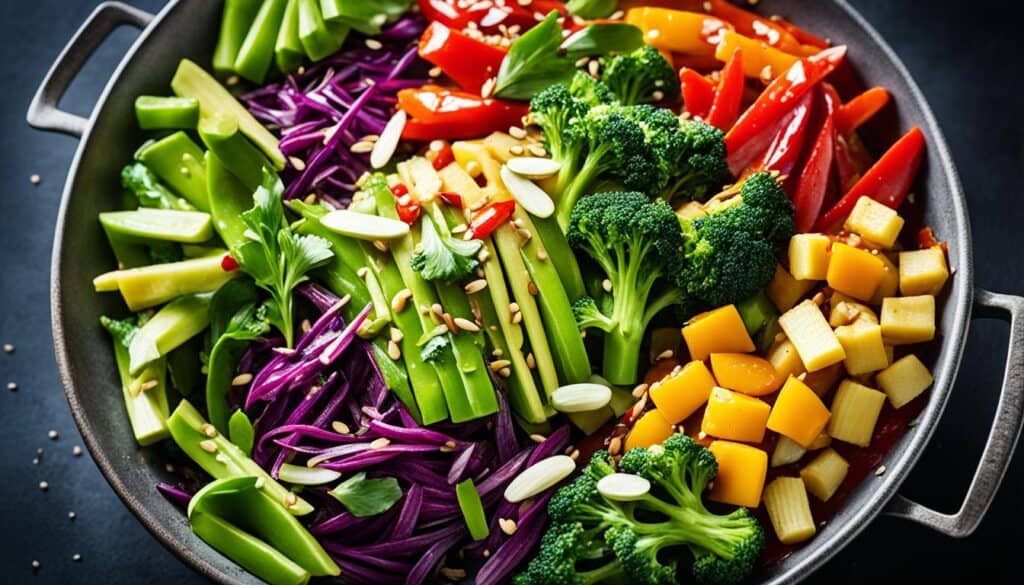
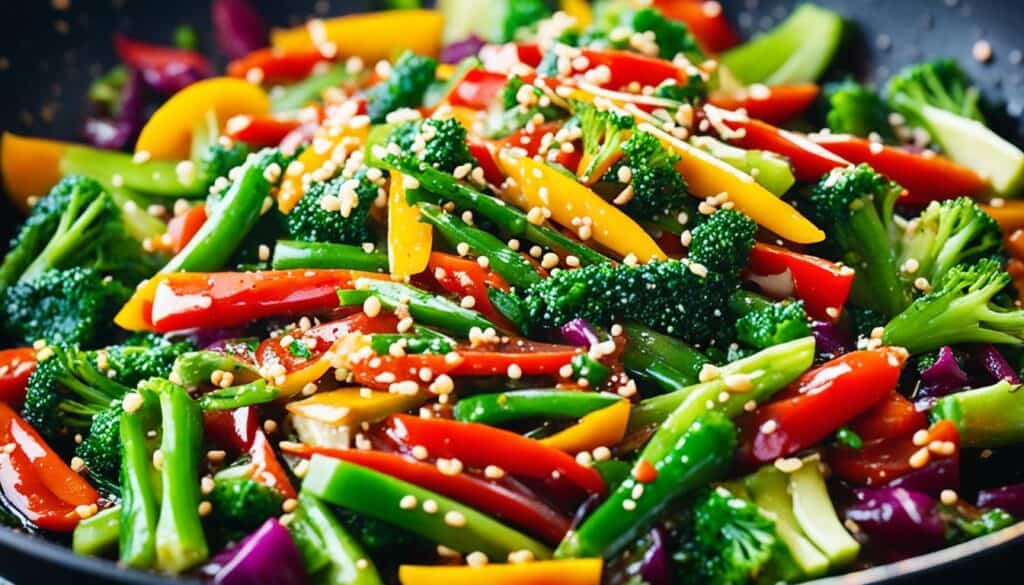
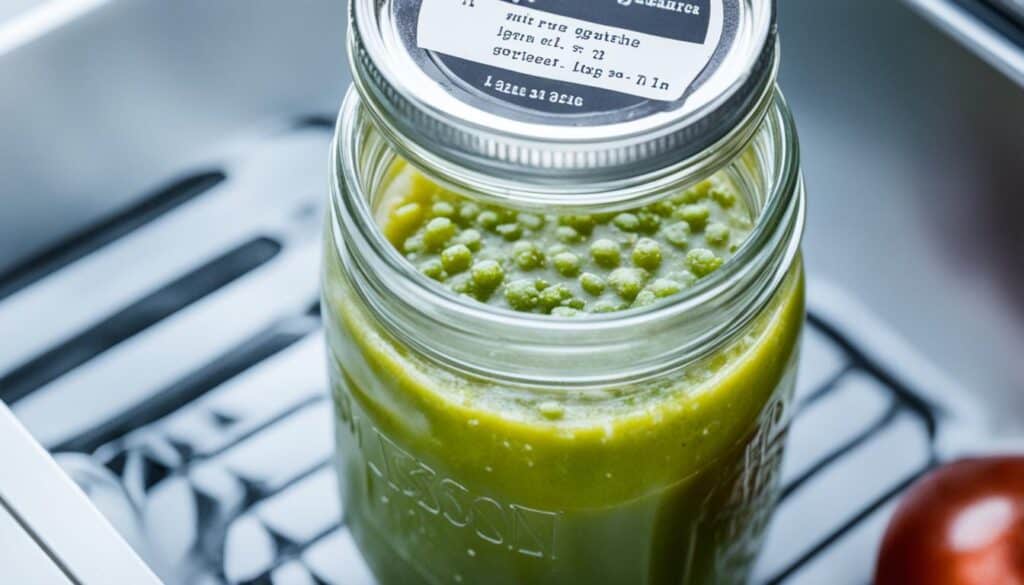



Leave a Reply